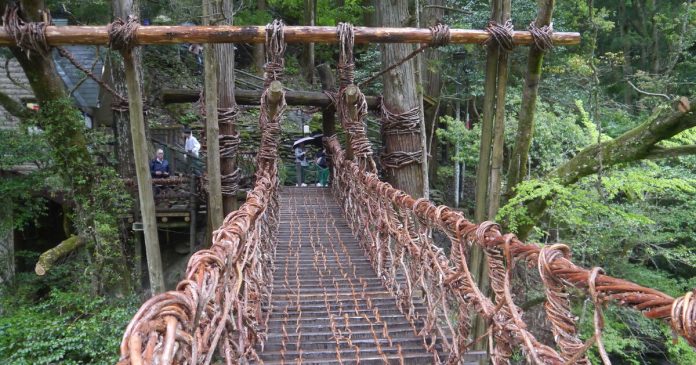For years, Japan has held an image of being a country full of metropolises, where the buildings are covered with bright and vibrant signs and the streets are filled with commuters and tourists alike.
Whilst this is certainly true of districts such as Shibuya in Tokyo and Dotonbori in Osaka, many tourists tend to forget that outside the cities lies a very different Japan.
That is why, during a short break to the country, I decided to escape the sprawling cities for a peaceful journey into the countryside. However, my day was not quite as relaxing as I expected.
In particular, I was heading to the Iya Valley on the island of Shikoku, a quiet area that was often used by samurai warriors as a hideout.
Whilst their presence has long since gone, replaced with the much more welcoming convenience stores and tourist information centres, there is still a great deal of how hostile life could be in the area.
With a twisting river cutting off parts of the Iya Valley, many makeshift bridges were constructed out of woven vines to help locals move around.
Said to have been built by members of the Heike clan following their defeat against the rivalling Genji clan, these bridges were a defence mechanism that could easily be cut if an enemy attempted to cross them.
As around 800 years have passed, many of the bridges have faded since. However, one example, Iya Kazurabashi, not only remains standing but is now an unlikely tourist attraction.
Fuelled with the spirit of a samurai (and a traditional bento box lunch), I decided to brave it and cross the 45-metre-long construction.
Walking up to the bridge, it made me smile to see most tourists hanging onto the side railings, again made from vine, for dear life, but I quickly learned why just a few steps after embarking on the bridge.
Being made from vine, the whole thing bounces and sways as people negotiate it which, in turn, causes a symphony of creaking from either direction and gave me an unnerving feeling that this eight-century bridge could quite easily split and throw me into the abyss.
Admittedly, the bridge’s design has changed somewhat over the last 800 years. Most reassuringly, it now features steel wire supports to keep it standing, not that tourists are able to see them whilst they cross.
What can be seen through the incredibly large gaps between the vines, however, is the rapidly flowing river about 14 metres underneath. My tour guide told the group that we should be very careful with our phones during our time on the bridge, or else they would end up with hundreds of others on the bank.
Personally, I was a lot more concerned about losing myself, having accidentally placed my foot right in the middle of one of the gaps when I was distracted by the beautiful surroundings.
Despite 45 metres feeling more like 45 miles, I eventually made it across Iya Kazurabashi with slightly sturdier nerves and an even stronger opinion of Japanese build quality.
The Iya Kazurabashi is open to tourists 365 days a year and can be crossed for 550 yen (£2.85) for adults and 350 yen (£1.80) for children.
However, I would advise anyone thinking about crossing any of the remaining vine bridges in Japan to bring a sensible pair of shoes and possibly a loved one for words of encouragement.
Source: express.co.uk

